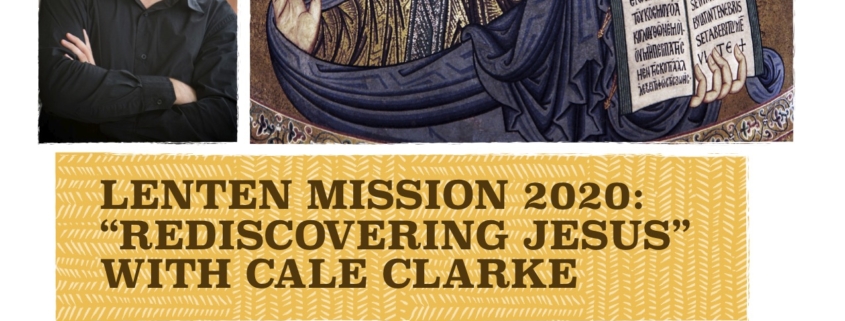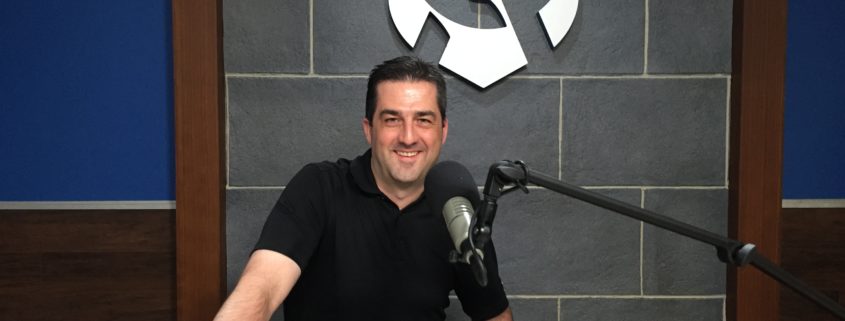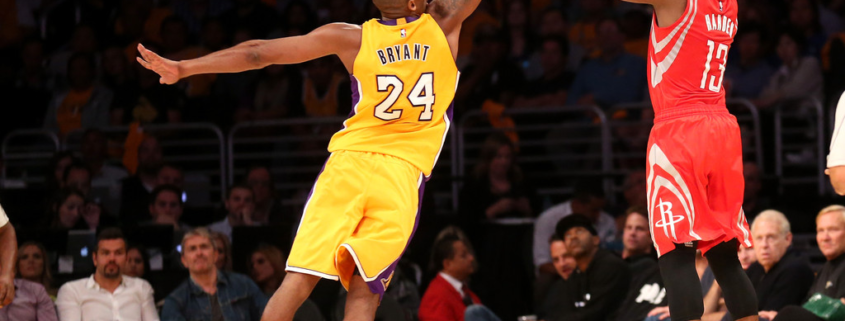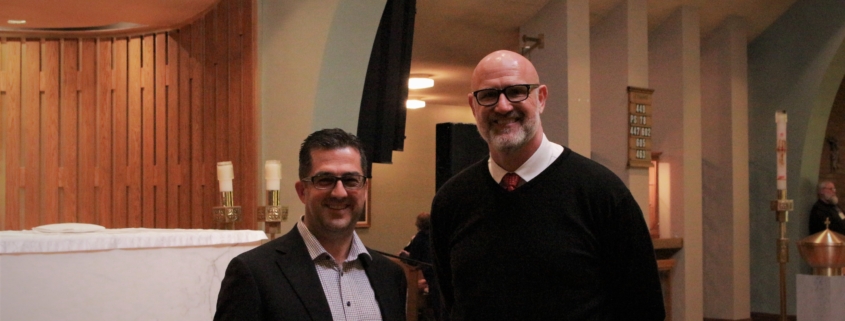Fantastic homily from Bishop Barron on the healing of the man born blind in John 9.
Due to: A) the fact that crowds >250 are discouraged in Ontario b/c of #coronavirus concerns, and B) my scheduled talk tonight on Jesus at St Mark’s Parish was expected to draw many times that number, C) the event has been cancelled (hopefully to be rescheduled for a later date). Also, B) is false. 🙂
Stay safe out there, everybody — and, as my professor, Dr. Craig Evans says: follow the example of the Pharisees, and wash your hands! (cf. Mark 7:2-4)
Hey everybody, just wanted to let you know that I’ll be guest hosting Saint Joseph’s Workshop on Relevant Radio tomorrow (Thursday, March 12) at & PM Eastern/4PM Pacific. We’ll be chatting about Jesus and history, among other fun topics! You can listen live on Catholic radio or download the Relevant Radio app to tune in!
(Note: This is my latest article for Catholic Answers Magazine.)
The sudden deaths of basketball legend Kobe Bryant, his thirteen-year-old daughter Gianna (or “Gigi” as she was known), and seven others in a helicopter crash on Sunday morning, January 26, has dominated world headlines.
For a generation of current NBA players and fans, Kobe was their Michael Jordan, the brightest star of his era—the eighteen-time All-Star and five-time champion with the only pro team he ever played for, the Los Angeles Lakers—and his loss hit them especially hard. Jerry West, who helped broker the trade that brought the teenaged Bryant to the Lakers after he had been drafted by Charlotte, referred to Kobe’s death as akin to the loss of a son.
Kobe, of course, was a father himself, to Gigi and three other daughters, the youngest of whom was born seven months ago. As ESPN’s Elle Duncan poignantly recalled, Kobe took great pride in being a father of girls. He championed their athletic ambitions (Gigi had hoped one day to play for the famed UConn Huskies at the NCAA level) and was a vocal and visible supporter of the WNBA, often seen courtside with Gigi at L.A. Sparks games, explaining the fine details of the sport.
Of course, one can’t speak of Kobe’s legacywithout mention of the events that occurred in 2003 in Eagle County, Colorado, when the married Bryant was accused of sexually assaulting a female employee of a resort where he was rehabbing a knee. The troubling details and the botched handling of the case by court officials have been well documented. The criminal case was dropped after Bryant’s accuser refused to testify, but a settlement (including a non-disclosure agreement) was negotiated after a civil lawsuit was filed. Bryant took the unusual step of issuing a public apology to the woman after the criminal proceedings were dismissed.
Although these events are a part of Kobe’s life that ought not be glossed over, the eternal verdict on a person’s life—which only almighty God can adjudicate—must take into account the totality of one’s life choices and the sincerity of one’s repentance played out over a lifetime, for “love is deeds and not sweet words.” And while only God knew the state of Kobe’s soul, one truth about him that is becoming more widely known is this: he was Catholic.
Early on his last Sunday morning, Kobe was seen praying in his home parish of Our Lady Queen of Angels in Newport Beach prior to the fateful helicopter ride en route to a youth basketball event. After the accident, anecdotes began to appear on Twitter about Kobe’s frequent attendance at daily Mass in the L.A. area, where he avoided (as much as is possible for a 6’6”, world-famous athlete) drawing undue attention to himself and away from the action on the altar.
In 2015, Kobe gave an interview to GQ magazinein which he related the encouragement he received from a priest in the struggle to rebuild his strained marriage following the events of 2003. In that piece, writer Chuck Klosterman noted that Kobe’s famous work ethic and competitiveness gave him an advantage in fighting to keep his family intact throughout the years:
In 2011, Bryant’s wife Vanessa filed for divorce, citing irreconcilable differences. Yet those differences were reconciled thirteen months later. They remain a married couple. ‘I’m not going to say our marriage is perfect by any stretch of the imagination,’ Kobe says. ‘We still fight, just like every married couple. But you know, my reputation as an athlete is that I’m extremely determined and that I will work my (expletive) off. How could I do that in my professional life if I wasn’t like that in my personal life, when it affects my kids? It wouldn’t make any sense.’ The logic is weirdly airtight: if we concede that Kobe would kill himself to beat the Celtics, we must assume he’d be equally insane about keeping his family together.”
Indeed, Kobe’s love for his family—and especially his daughters—was well known.
Was Kobe Bryant perfect? No, by his own admission. Was the loss of his life any more tragic than the loss of the other eight souls who perished that Sunday morning? No. Was he striving to be a good Catholic? I don’t know, but I am hopeful, given what local SoCal bishops and priests have said about his quiet piety. And it should go without saying that the Catholic faith is not any more or less credible because Bryant was an adherent.
But I do know this: we Catholics believe in forgiveness, even for those who may have committed serious sins, provided they have repented. Christ died for each one of us, even though he foreknew the vast and bleak panorama of sin of which the human race stands guilty. Just think of King David, God’s chosen instrument, who not only committed adultery with Bathsheba but subsequently orchestrated the murder of her husband, Uriah. Despite David’s dastardly deeds, after the prophet Nathan brought him to repentance, David moved forward in his journey toward God. He could become again what he had once been: a man after God’s own heart. Kobe’s determination to fight for his family makes me hopeful that he wanted the same thing.
We do know this: Kobe Bryant’s journey to eternity is now complete. We pray for the repose of his soul, along with Gigi’s and those others whose earthly stories also have ended. We didn’t get to see Kobe’s second act in life. An Oscar-nominated short film, a children’s book, and other things he had accomplished since his retirement from basketball hinted that the second act might have been even more compelling than the first. It would have been inspiring to see him continue to strive to be as great a father as he was a basketball player. His three surviving children have been left without a father and his wife, Vanessa, without a husband. We pray for them, too.
Let us strive to remain in a state of grace ourselves and hasten to confession when needed. That’s how we win the spiritual battle. We win when we confess that, at times, we have lost. Kobe’s story is a reminder that one never knows how many seconds are left on the clock in this world. So, as St. Paul (who was fond of using sports metaphors) might say, let’s play the game of life in order to win. For us, that means becoming saints—the best version of ourselves. As Kobe once asked of some less-than-committed Lakers teammates, “If you’re not here to win, why are you here?”
This month I had the privilege of speaking once again at the annual Men of Faith Conference in London, Ontario. Hundreds of brave men braved a pretty decent snowstorm to join us at St Michael’s Church. And, as a lifelong sports fan and NFL nut, it was a special treat for me that the other speaker at this event was none other than Elvis Grbac!
For those of you who don’t know Elvis Grbac from, well, that other guy who made the name famous, Elvis Grbac was a well-known quarterback throughout the 1990s. When I was in high school, Elvis was the QB of my favorite college squad, the University of Michigan Wolverines (and, unlike modern-day Michigan signal-callers, I might add, he never once lost to Ohio State). Grbac’s Michigan (and high school) teammate, Desmond Howard won the Heisman trophy (given to America’s best college football player) while receiving Grbac’s passes and running back kicks in ’92.
After his college career, Elvis played — and started — for the San Francisco 49ers and the Kansas City Chiefs (the two teams who will meet in this Sunday’s Super Bowl — Elvis really can’t lose when it comes to this matchup), finishing his career with the Baltimore Ravens.
Like me, Elvis has also been a guest on The Journey Home Program on EWTN, hosted by Marcus Grodi. Check it out if you want to learn more about his rediscovery of his Catholic faith.
I really enjoyed having the chance to sit down with Elvis for breakfast the day of the conference and get to know him a little bit better. As you can see from the picture above, I’m more along the lines of Doug Flutie, stature-wise, next to Elvis (who’s 6’5″).
Elvis began his presentations by holding up his Super Bowl ring (he was the backup to Steve Young for the 49ers’ win over the San Diego Chargers in Super Bowl XXIX) and saying “This is the golden calf, fellas! Men give their lives for this…” Great stuff.
For my part, I spoke about how to evangelize in the context of personal friendships, much like the early Christians did. It was a great day, and my thanks go to the Family Foundations institute for inviting Elvis and me to share our faith journeys with these awesome guys.
Charlotte Higgins, writing for The Guardian (UK):
On 1 February 2012, in Chapel Hill, University of North Carolina, two theologians, Prof Bart Ehrman and Dr Daniel Wallace, were debating – to a rapt audience of 1,500 – whether the original text of the New Testament could be recovered. Suddenly, Wallace dropped a bombshell.
“The oldest manuscript of the New Testament is now a fragment of Mark’s Gospel that is from the first century,” he claimed. “My source is a papyrologist who worked on the manuscript, a man whose reputation is unimpeachable.” It was, recalled Ehrman at a recent conference in San Diego, “a real jaw-dropper”.
Ehrman was bursting with questions. How extensive was the fragment? Who was the papyrologist? Had the dating been corroborated by others? Wallace said he was sworn to secrecy. All he could reveal was that the fragment would soon be published by the academic imprint, Brill.
A few months later, Brill did indeed announce a new publication: the Green Scholars Initiative Papyri Series, edited by Obbink and Pattengale, a series of volumes of “rare unpublished papyri texts from the Green collection”. The mystery fragment of first-century Mark, then, must belong to the Greens, Ehrman reasoned. The only problem was that the fragment “wasn’t published that year, and it wasn’t published the next year, and it wasn’t published the next year,” said Ehrman. “I started to feel like it was the parousia (Christ’s second coming) – it’s coming soon, but we don’t know when.”
For the scholar sleuths – as they would soon become – alarm bells started ringing.
This is an almost unbelievable — and tragic— story, and well worth the read. It’s hard to understate the excitement among bibliophiles that surrounded the revelation of this alleged first-century fragment of Mark, especially after Wallace jumped the gun and ill-advisedly referenced it in his debate with Ehrman, which you can watch here.
Not only was this unfair to Ehrman from a debating perspective, who had not previously heard of the fragment’s existence, and who obviously had no opportunity to prepare any kind of response to Wallace’s assertions, but, as it turns out, Wallace (who is a world-class textual scholar) had trusted the word of Carroll on the fragment’s provenance. Carroll, for his part, had trusted the word of Obbink.
This article appears to be devastating to Obbink’s credibility. “We all trusted him”, as one senior professor privately expressed to me. That trust now lies shattered, along with, potentially, Obbink’s career.
Lost in all of this intrigue is the fact that this Markan fragment does, in fact, exist, and — whatever its backstory might be — it’s still quite possibly a second-century fragment, which would be a notable find on its own merits.
I was interviewed this week for Deacon Doug McManaman’s new show, Podcasts for the Religious. It was a lot of fun to see Deacon Doug again. Aside from his great diaconal work, Doug taught philosophy to high school students for many years (no easy task, that), and has written extensively on Catholic education. On the show, we talked about all sorts of things surrounding Advent — how the Dead Sea Scrolls prove that Jesus indeed claimed to be the Messiah, the surprisingly deep meaning of the opening verse of Mark’s Gospel, and even a fun (although perhaps apocryphal) story about Queen Victoria! You can check out the full episode here, or subscribe (as you really should) to Deacon Doug’s show on Apple Podcasts, or wherever fine podcasts are downloaded!
Here’s a catechesis I delivered on baptism with Father Ryan Alemao at the Jordan River, while on The Faith Explained Holy Land Pilgrimage. Together we unpack the biblical background and theological meaning of Jesus’ baptism — and our own.
Be sure to subscribe to our new YouTube channel here!





